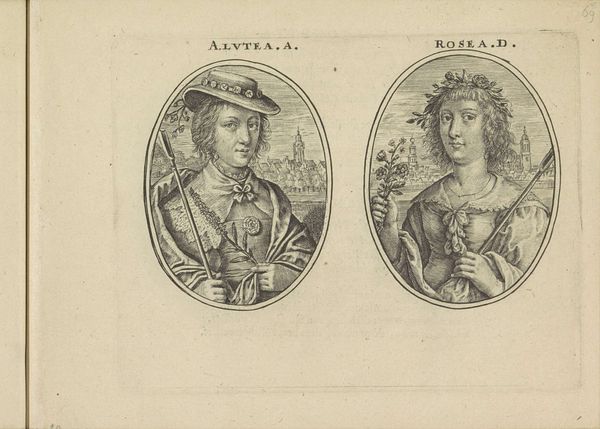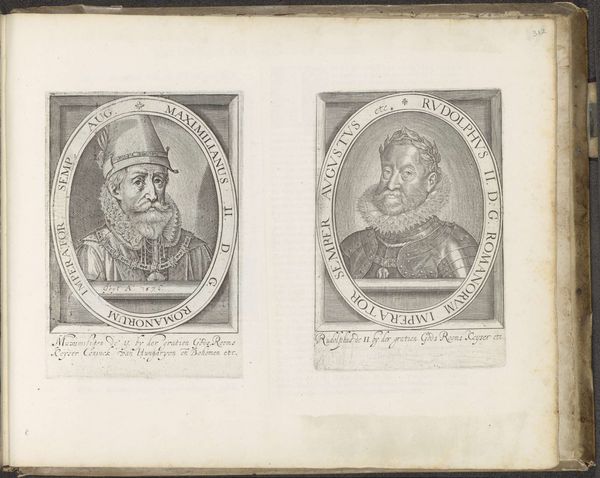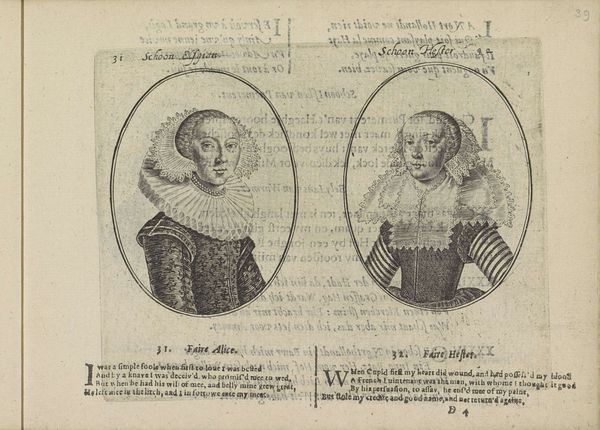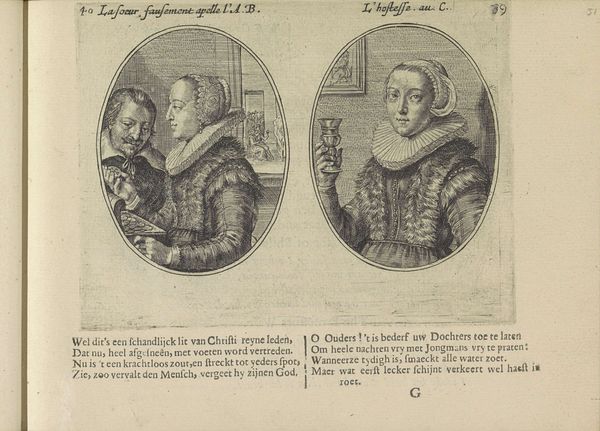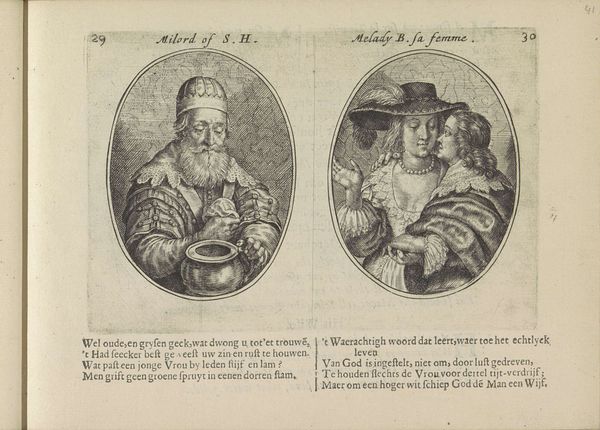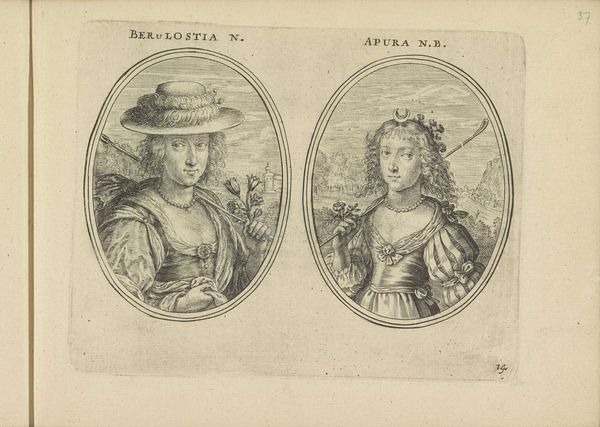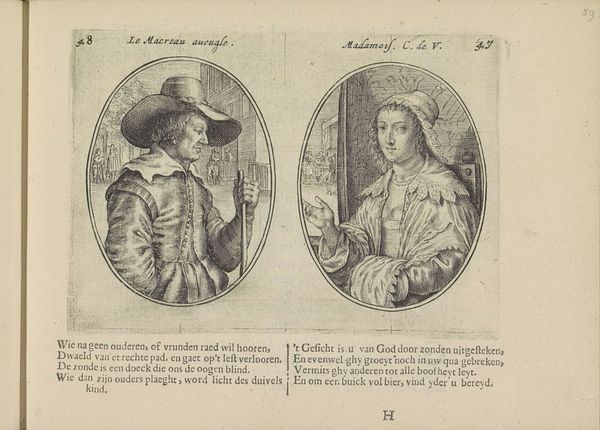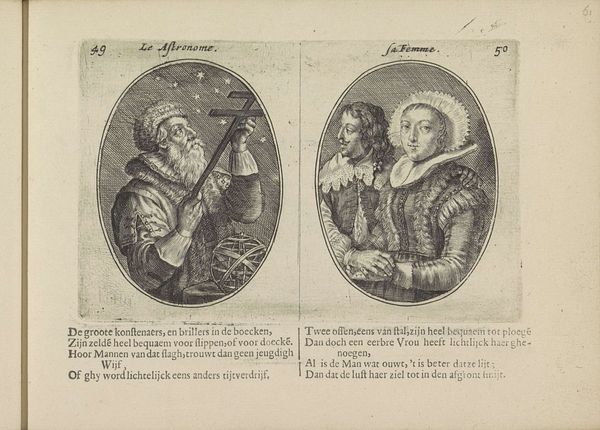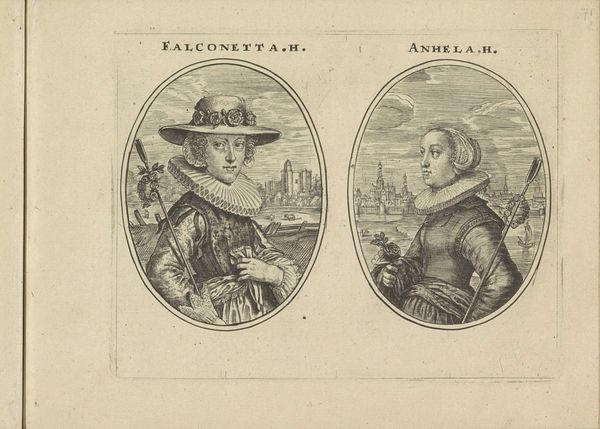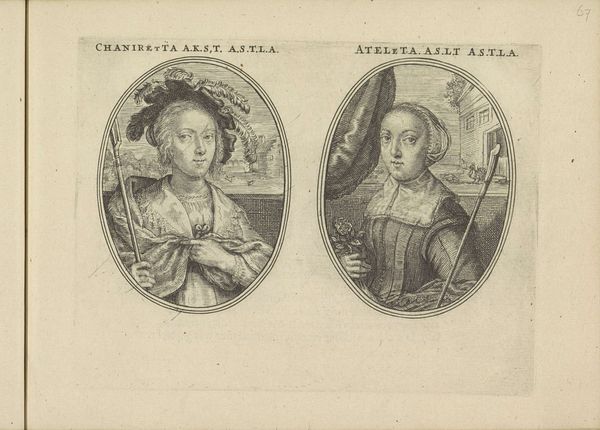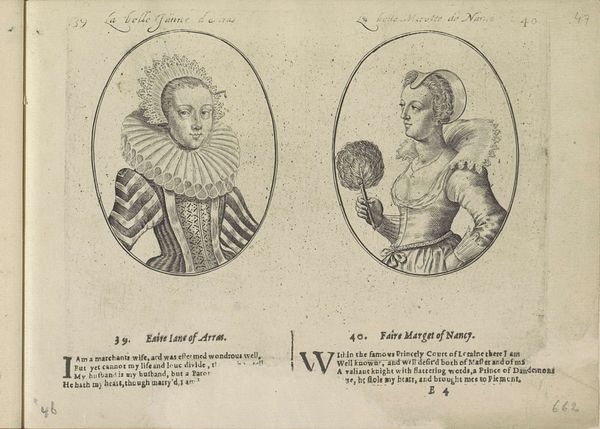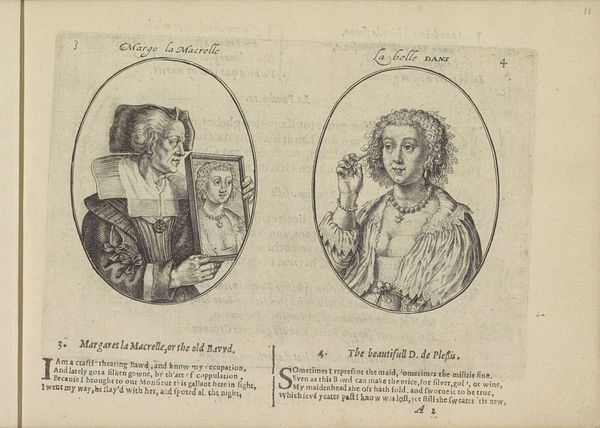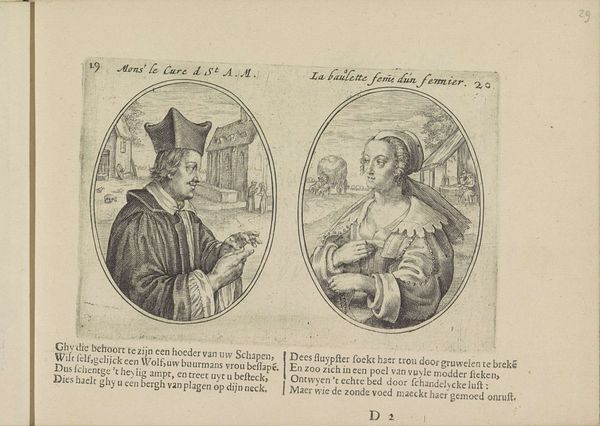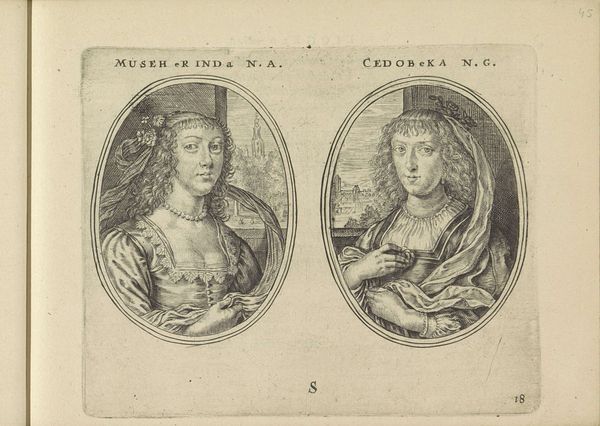
Portretten van twee onbekende vrouwen, beiden als herderin 1640
0:00
0:00
engraving
#
portrait
#
baroque
#
old engraving style
#
figuration
#
history-painting
#
northern-renaissance
#
engraving
Dimensions: height 117 mm, width 153 mm
Copyright: Rijks Museum: Open Domain
Curator: Welcome. We are looking at "Portretten van twee onbekende vrouwen, beiden als herderin," or "Portraits of two unknown women, both as shepherdesses" by Crispijn van de Passe II, an engraving created around 1640. It's part of the Rijksmuseum's collection. What's your immediate reaction to it? Editor: There's a real formality here, almost severe. The contrast between the pale faces and the dark, dense lines of the engravings gives it a striking visual presence. But these women, in their roles, seem rather confined, even burdened by the artifice. Curator: It's the Baroque influence. Notice how van de Passe uses line to define shape, emphasizing the ruffs and headwear? Each line functions almost sculpturally. The engravings' sharp details render the textures beautifully; the delicacy of the lace versus the rougher weave of their garments is evident. Editor: True, but I find myself wondering about the act of engraving itself. How was this image transferred? How much of van de Passe's labor was involved in each impression? What sort of access would average people have had to such engravings, considering the work involved? And what was the printing process for a work of this nature? Curator: Those are excellent questions. Viewing these details, it strikes me that the engravings use strict, unwavering compositions, offering little room for deviation; the gazes of the figures are level. I note an absence of deep emotional context. What story do these portraits aim to tell through visual language alone? Editor: Considering their pastoral guise, I wonder, was it to elevate these women, portraying them as symbolic guardians of nature or perhaps commenting on courtly fashions referencing a simpler life? Curator: That tension underscores the Northern Renaissance aesthetics combined with the Baroque period’s ornate sensibility in play here. They exemplify artifice; they are playing shepherdesses within constraints. It reveals a complex dynamic between status and its idealized reflection. Editor: Indeed. It invites us to contemplate the labor of its making. These shepherdesses lead us not to idyllic pastures but back to workshops, techniques, and the economic systems that propelled art production in 17th-century Europe. Curator: A fruitful discussion. Editor: Absolutely, highlighting the multilayered interpretations.
Comments
No comments
Be the first to comment and join the conversation on the ultimate creative platform.
